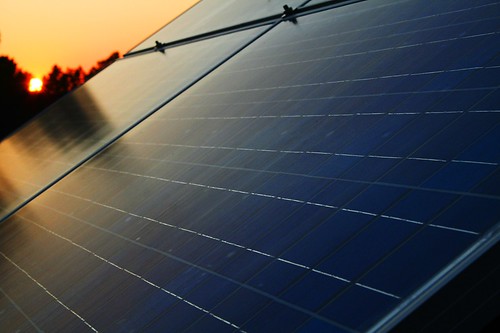
Photo credit filippo minelli
There is no doubt about it but Google is a disruptive company.
First Google disrupted search, then advertising, then video (with their acquisition of YouTube), and then Office applications with the launch and continued development of Google Apps for Domains. Most recently Google has disrupted the mobile phone industry, first with the launch of their Android operating system and just a couple of days ago with the launch of their Nexus One mobile phone.
What then should we make of Google’s recent creation of a subsidiary called Google Energy LLC and Google Energy’s request to the Federal Energy Regulatory Commission (FERC) to buy and sell electricity on the wholesale market [PDF]?
Given Google has already invested in solar power generation, given further that Google has invested in wind and geothermal power generation technologies (as part of its RE < C project), and given that Google has already launched its first product in the Smart Grid space, Google PowerMeter, should we now expect Google to start disrupting the utility industry as well?
Curious about what all this meant I contacted Google spokesperson Niki Fenwick to try to get some answers – see my questions and her responses below:
TR: What was the thinking behind Google’s setting up Google Energy? Why is Google applying to the FERC for permission to trade in electricity?
NF: Google is interested in procuring more renewable energy as part of our carbon neutrality commitment, and the ability to buy and sell energy on the wholesale market could give us more flexibility in doing so. We made this filing so we can have more flexibility in procuring power for Google’s own operations, including our data centers.
TR: Google has made some investments in renewable generation (solar, geothermal and wind), does Google hope to take on the utilities by selling electricity? How does this tie into Google’s PowerMeter project?
NF: This move does not signal our intent to operate as a retail provider and is not related to our free Google PowerMeter home energy monitoring software. We simply want to have the flexibility to explore various renewable energy purchase and sale agreements (that means we can buy electricity wholesale, rather than through a utility).
TR: Will Google Energy be used to develop more Smart Grid products?
NF: We don’t have any plans to announce at this time.
TR: How does this tie into Google’s partnership with GE?
NF: This move isn’t related to our partnership with GE.
So there you have it, according to Google this application to trade in electricity on the wholesale market is simply to gain more flexibility in procuring power for Google’s own operations, as part of Google’s carbon neutrality commitment.
Google have no plans to become a retail electricity provider.
For now. Things change.
After all, it is not so long ago that Google were denying rumours that they were developing a Google phone!
Related articles:
- Google seeks to trade wholesale power in U.S. (financialpost.com)
- Will Google Energy Power Its Data Centers? (datacenterknowledge.com)
- Ramon Nuez: Google is Going into the Electricity Business (huffingtonpost.com)
- Google launches Google Energy, hoping to bring more green energy to its datacenters (engadget.com)
- Google applies to become electricity marketer (infoworld.com)
- Google seeks to become energy trader (theregister.co.uk)




